Holidays in Portugal. History, Good Food and magic places.
Its nature, beaches, people, and gastronomy have made Portugal one of the world's most popular tourist destinations. That's why this week I went on holiday to this vibrant country, and I would like to show you some of the delicious things I have eaten and the beautiful places have visited.
Suppose you are thinking on going to Portugal for holidays. In that case, I'm sure you can get some ideas from this little summary of my holiday. But first, to understand this country a little more, I would like to share a couple of historical notes that you might not have known and that I found fascinating.
History
Portugal has hosted a long list of foreign conquerors and rulers over the last 3000 years. Celts, Romans, Visigoths, Arabs and Christian Crusaders all contributed to creating the Portuguese identity.
Birth of a Kingdom
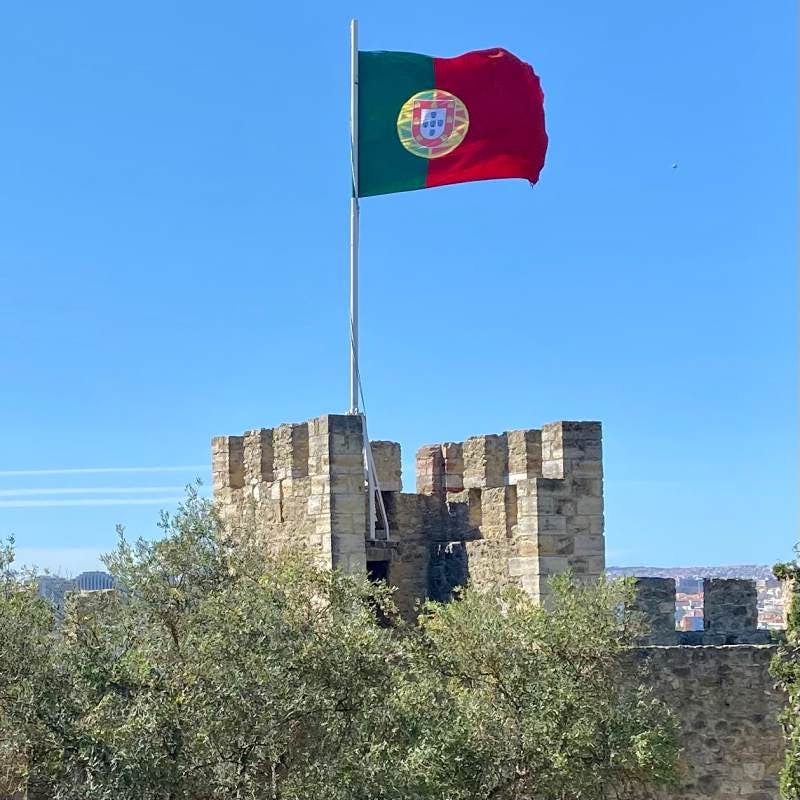
San Jorge Castle
If the Muslim invasion of the Iberian Peninsula was rapid, the Reconquest of the Christians in the north was much slower. This gradual process gave rise to the birth of small kingdoms that would grow larger as the Reconquest bore fruit. The first, the Kingdom of Asturias, became the Kingdom of León with Alfonso III the Great of León in 901.
Later, Alfonso VI of León (self-styled emperor) gave, by merit, to his son-in-law Henry of Burgundy, the County of Portucalense. From this county, which belonged to the Kingdom of León, but which possessed significant autonomy, the Kingdom of Portugal would emerge.
In the 15th century, sailors and explorers transformed the country into an empire. The following centuries were difficult for the country. The Lisbon earthquake of 1755, and industrialisation, dictatorship and decolonisation. It was in the 1980s when Portugal became a stable democracy.
In many ways, it is a parallel history to that of Spain.
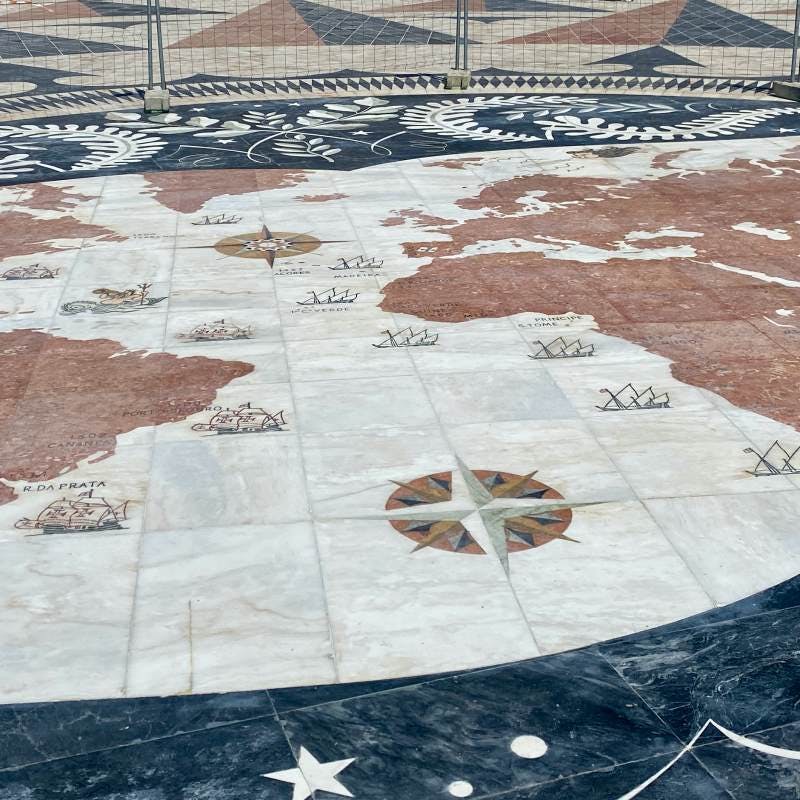
Monumento a los Descubridores
Historical relations with Spain
One of the periods in the history of Portugal that I would like to highlight is called the Iberian Union.
It is one of the historical periods between 1580 and 1640. Portugal constituted a dynastic union with the other dominions that made up the Hispanic Monarchy under the same sovereign of the House of Austria.
During its existence, the extension of the Iberian territorial bloc became the largest empire of its time. They ruled over a vast area of the world that stretched from the Indies in America to the far east of Asia, including factories in Africa and India.
Imagine the number of ingredients that could be brought to Portugal and Spain at that time and the significant influence this had on Europe.
If you want to know more about the history of Portugal, Click here.
Places and Food
The south of Portugal, the Algarve
The route started in this beautiful southern region. The beauty of its beaches and the friendliness of its people is something to be highlighted.
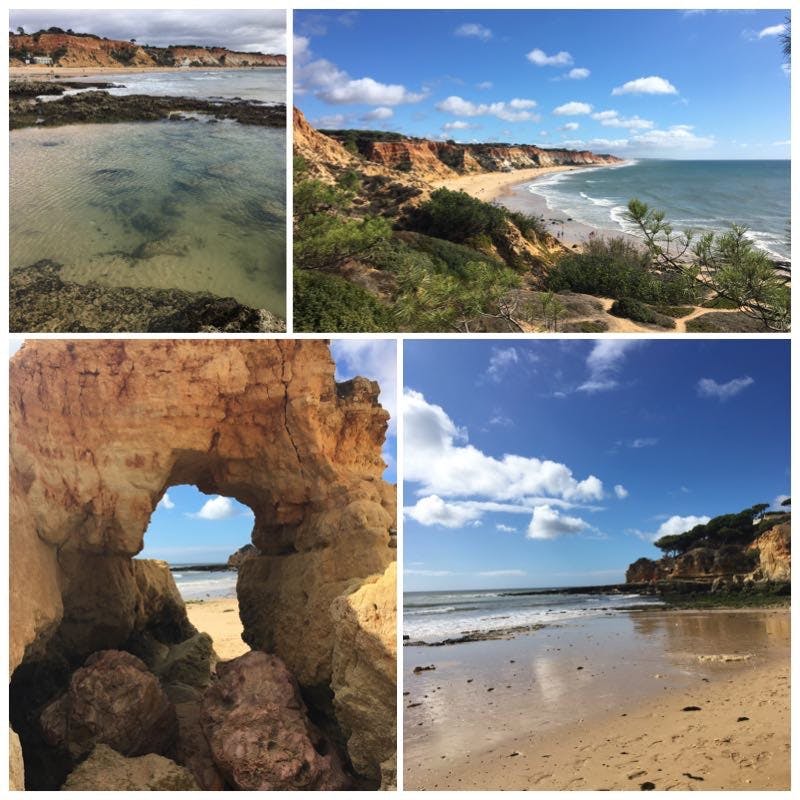
South Coast
Faro, Albufeira and Olhos del Agua are the three villages where I stopped. And one of the plate I most enjoyed were those amazing grilled sardines.
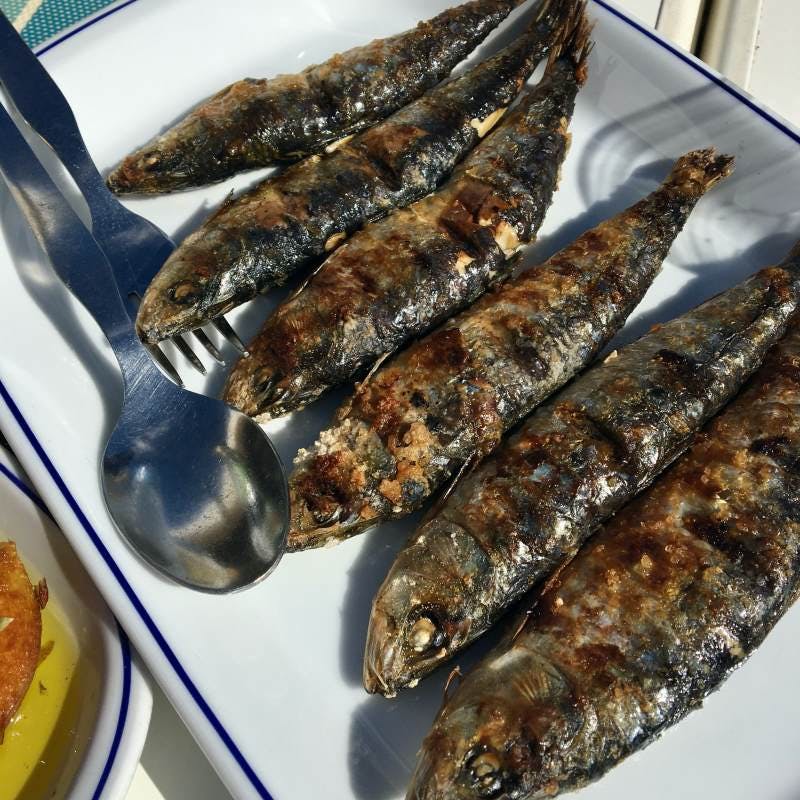
Lisbon

Rua da Madalena
After a couple of days on the south coast, I set off for Lisbon.
This city has so much to see and do that it is challenging to have enough time for everything. But one of the good thing is they have great public transport. There are different options to move around the city like the traditional Tram, Bus and even electric scooter. If you do a good planning sure you will time to everything. Here you have some of the places in Lisbon that I discovered.
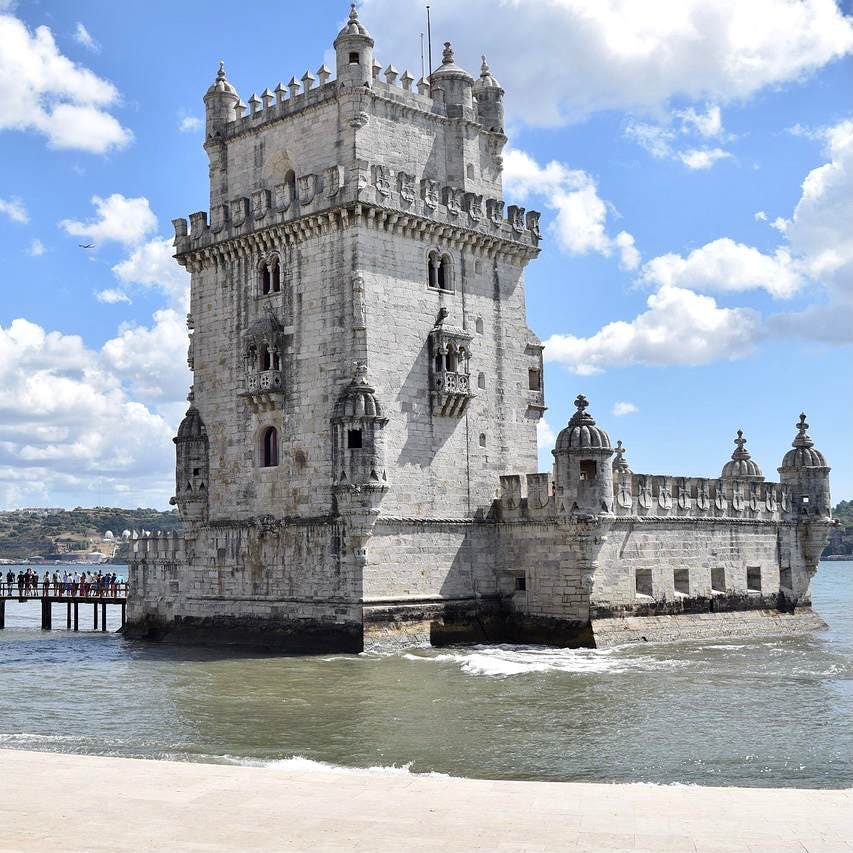
Torre de Belen
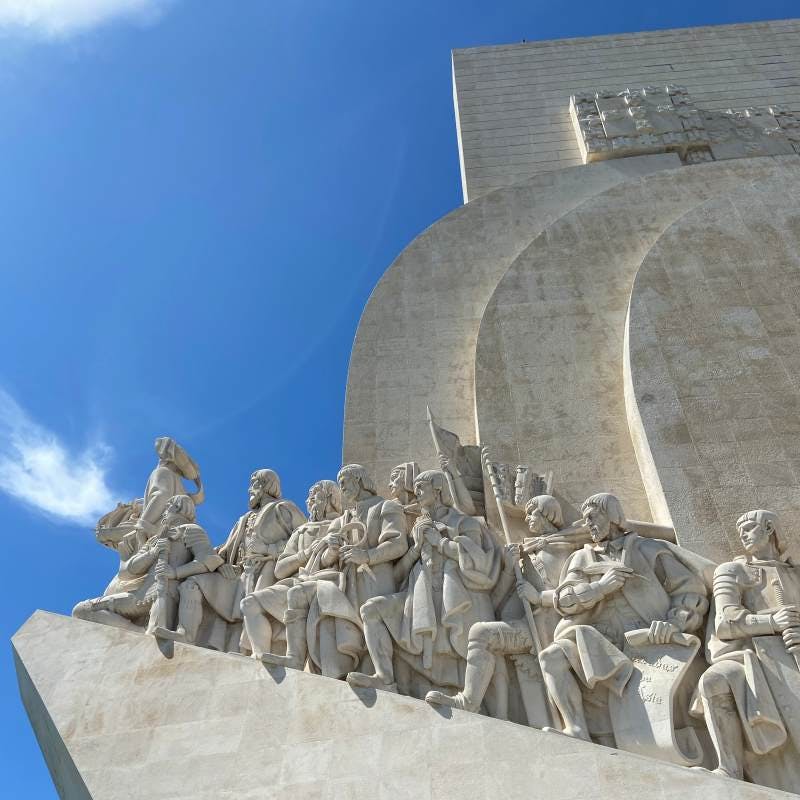
Monumento a los Descubridores
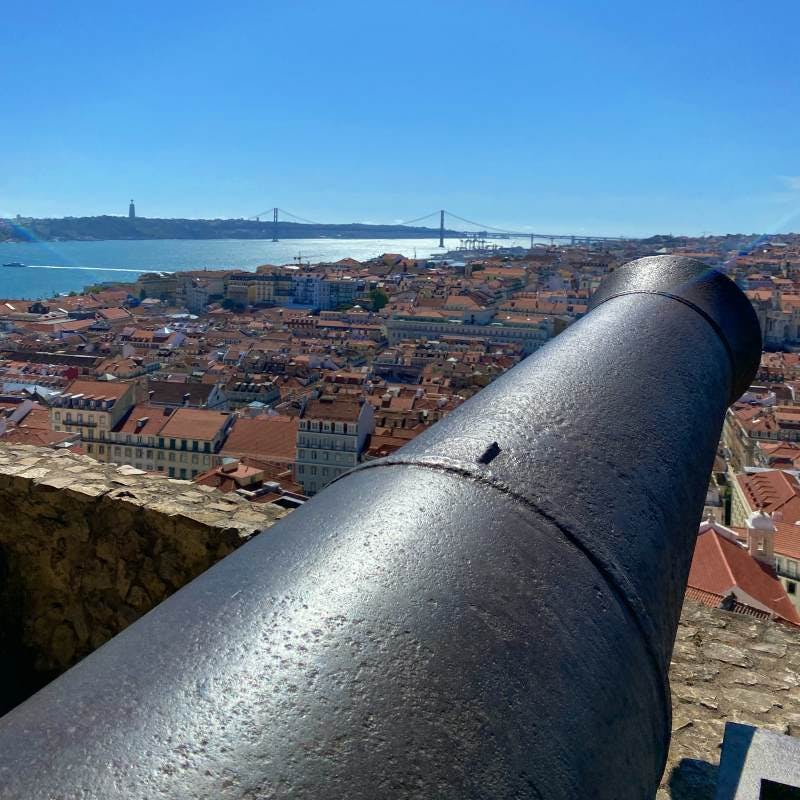
San Jorge Castle views

Praça del Comercio
But the most remarkable think about Lisbon is how good the food is. Here you have some the delicacies I tasted and the link for two Restaurants I enjoyed the most, in case you want to try:
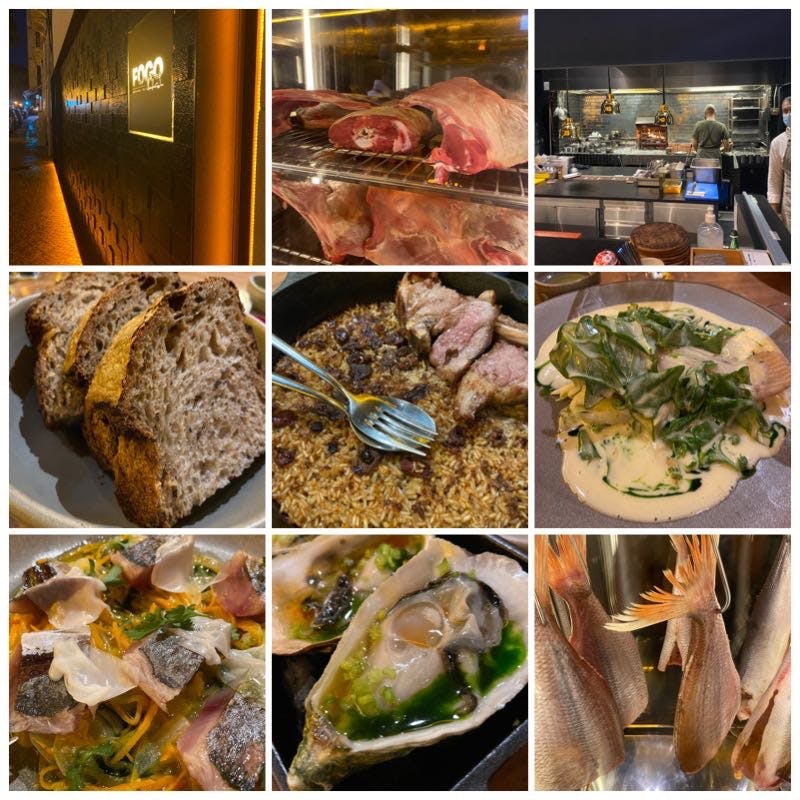
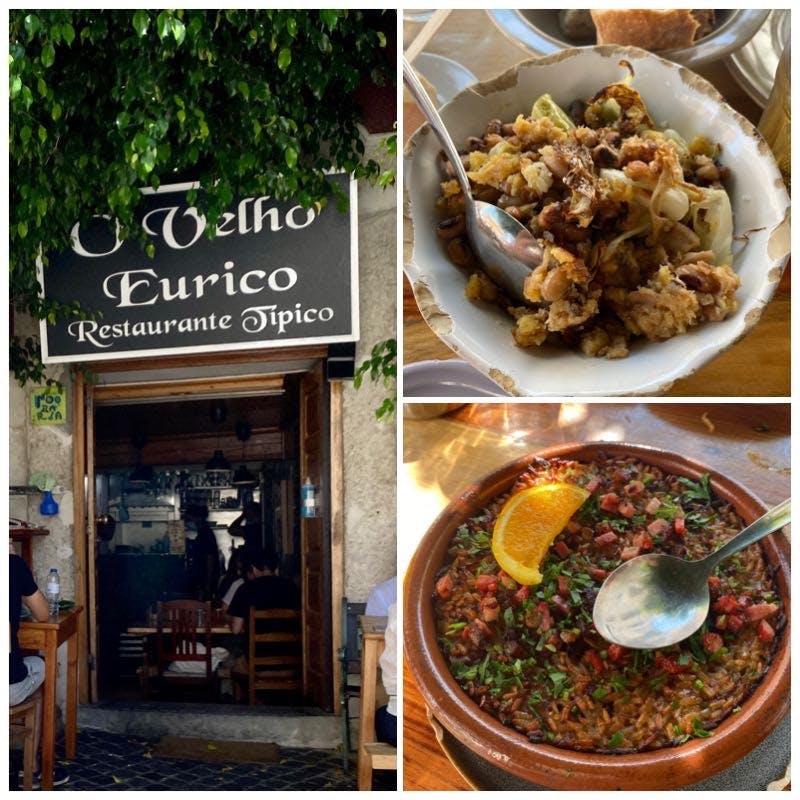
Sintra
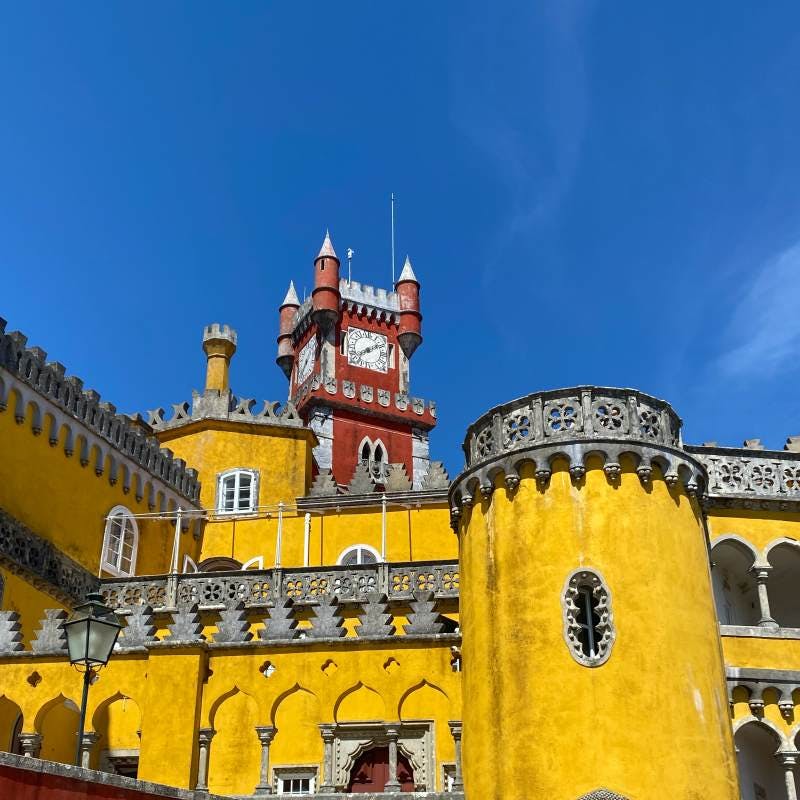
Pena Castle
An ode to the beauty of Portuguese architecture during the Romantic era, Pena Palace stands atop the Sintra mountain. Once a popular pilgrimage site and later the residence of the royal family, it was ultimately converted into a museum in 1991.
Painted in attractive shades of red and yellow, the Pena Palace has been attracting thousands of visitors every year. The architecture has all the features of a Romantic-era classic with distinct Moorish and Manueline influences. Surrounding the palace is an extensive park where you will come across more than 500 species of trees. I was amazed by "El Parque Natural de Peña" and its castle.

Pena Natural Park
Unfortunately, the holiday was coming to an end. After another 5 days between Sinatra and Lisbon, I had to go back home. I think I have left many things to visit, so I have promised to come back in the future, and this time I will go as far as Porto.
To say goodbye I have good news to give you, soon I will cook one of the dishes that I like the most on this fantastic trip. If you want to know what it is, you can found some clues on my Instagram and Facebook.
Have a tasty day!



